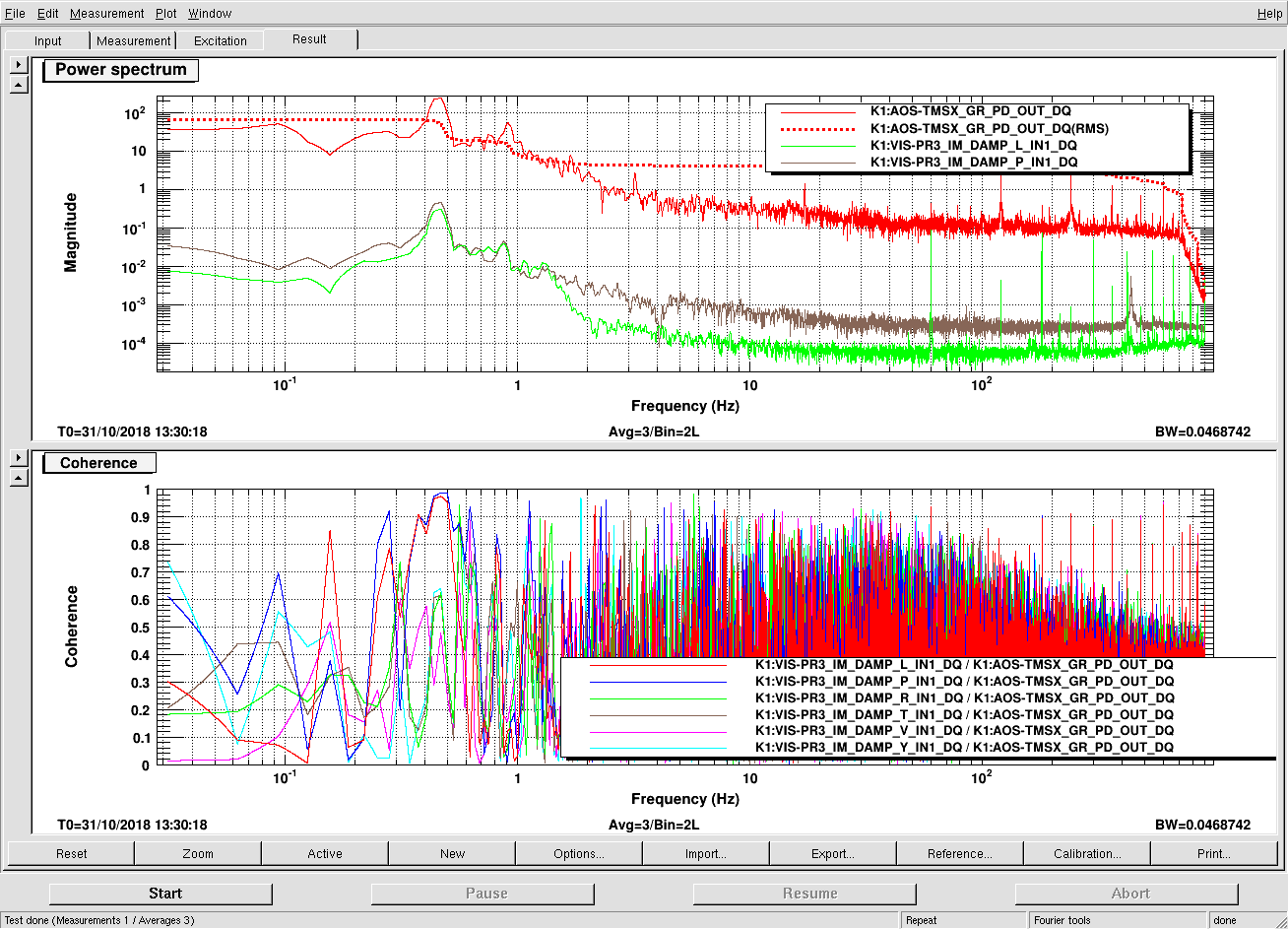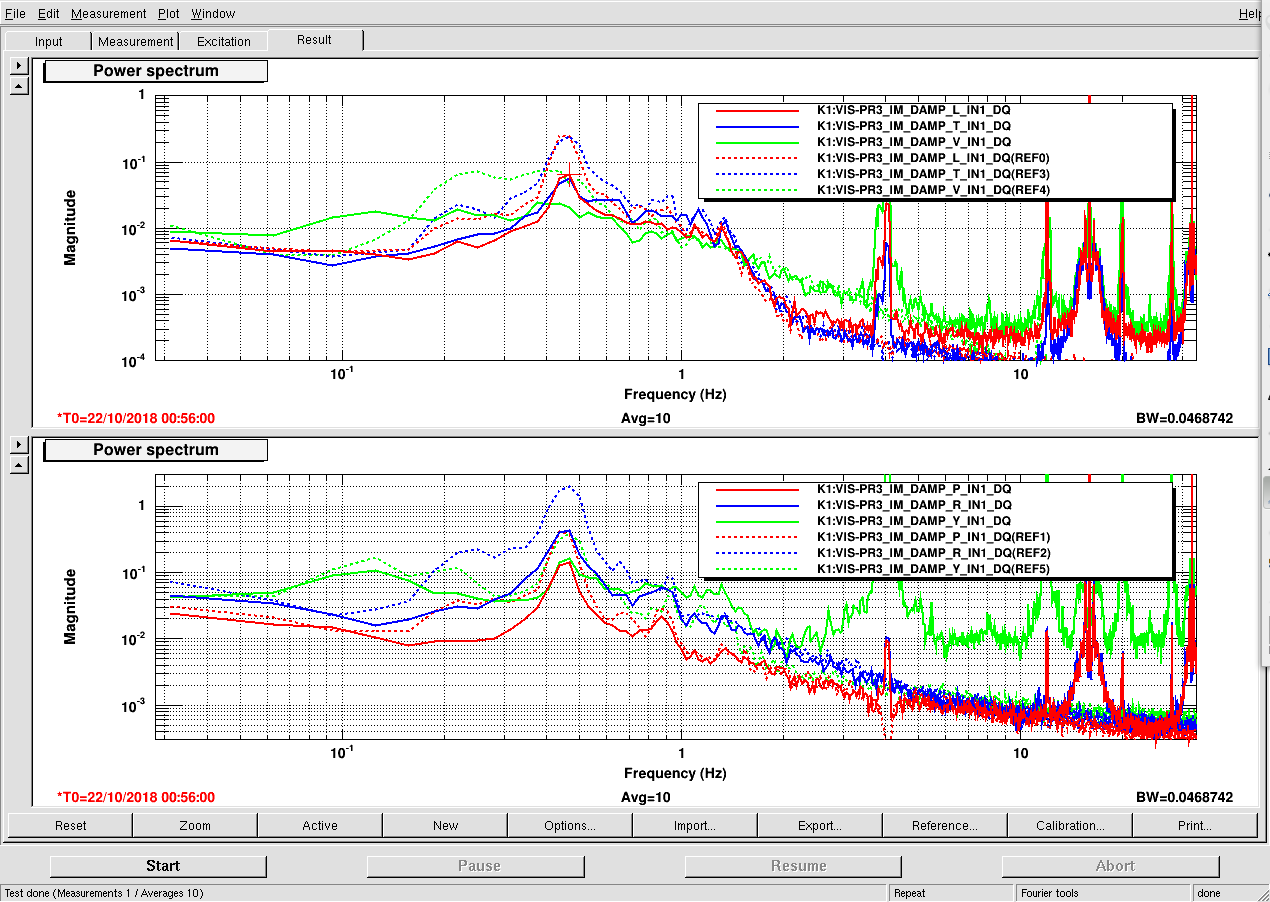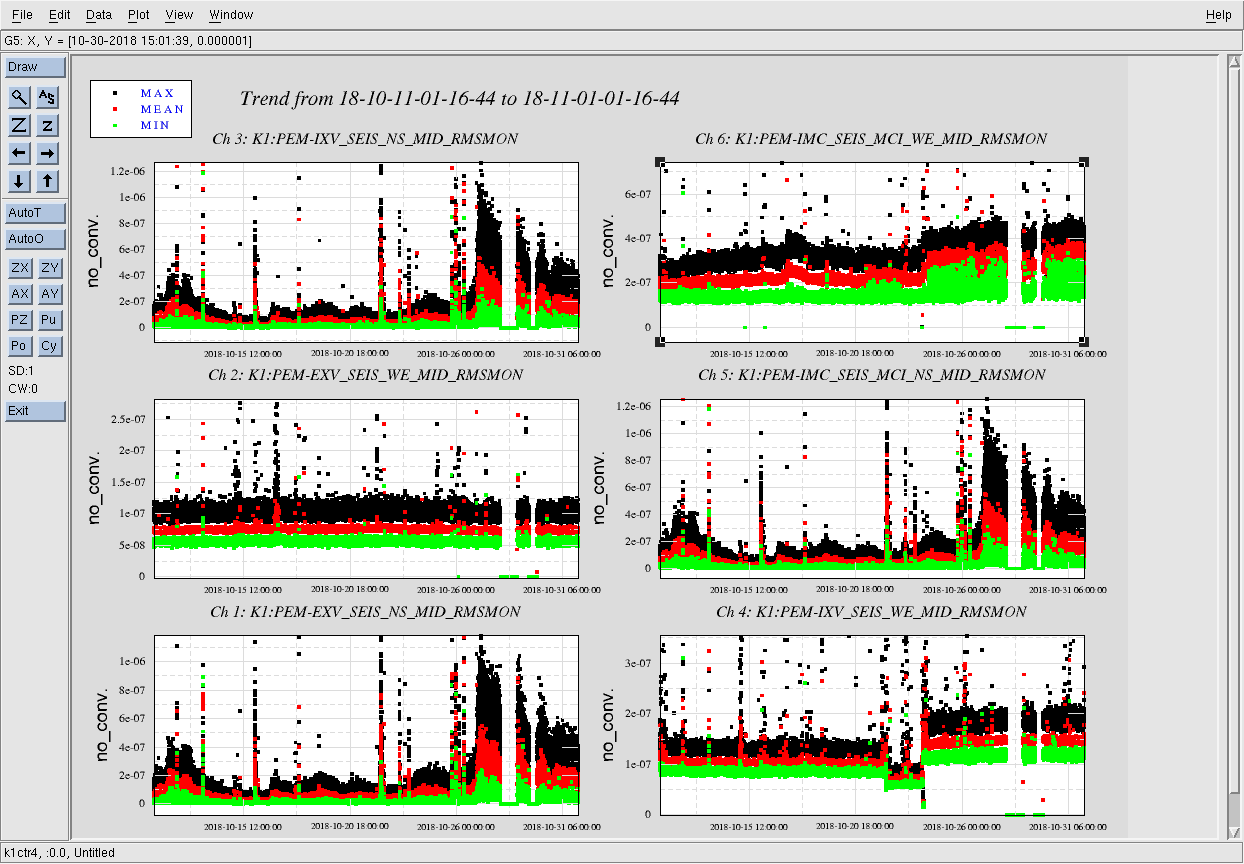Lucia, Kiwamu, Yoshinori,
Log on Nov. 1st(& 2nd), 2018.
= Background =
As reported in klog#6803, PR3-optic was oscillating at atound 0.45 Hz and this had been making the X arm lock unstable. The candidate resonances are the followings according to [1]:
Mode#5: 0.42 Hz, IM-PIT mode
Mode#6: 0.46 Hz, Main-chain mode in T/R
Mode#7: 0.47 Hz, Main-chain mode in L/P
Since the IM/BF-damping filters have been already implemented successfully and also based on the observed peak frequency, the issued peak seemed to come from the Mode#6, 7, i.e., the main chain mode(s). Actually the 0.45 peak was observed in BF-L/P spectra like in 1st png.
= What we did =
Then we tried tuning the following damping filters:
- IM-P to IM-P: total gain was increased by factor 2
- IM-V to IM-V: "calmdamp" was switched on, instead of "damp2". actually the shape of the damp2 would be modified.
- BF-P to BF-P: total gain was increased by factor 3
- BF-R to BF-R: total gain was increased by factor 3
- SF-GAS to SF-GAS: "damp2" was installed instead of damp. the frequencies of the zeros and the poles were shifted.
(since it seemed that some of these gains were not optimized using measured transfer functions.)
After these tuning, we could reduce the height of the peak in PIT at 0.45Hz at BF- and IM- stage in some extent successfully, it was not much though (1st pdf, reduced like by a factor of 2 or 3. the dashed curves show the spectra before the tuning work, while the solid ones are the ones after the work). Actucally it had been reported that the recoil-BF would not be able to damp the optic motion of the main-chain mode *entirely*, according to a simulation (due to the mass ratio between the BF and the recoil-BF) as the 2nd png shows (only the red and blue curves are to be concerned). Thus if the observed peak is due to the main chain mode, it could be natural that we observe the resonance with relatively large amplitude at the frequency.
= For the next =
- On that day, we just tuned the filters mainly for the issued DoF, PIT/Roll, and did not much pay attention to the other DoFs like L/T etc, and thus we can tune them as well in order to reduce the couplings among them.
- The coherence between the IM, BF motion and the seismic motion is to be measured. Actually we observed sometimes the IM-PIT spectrum became smaller than the one before the tuning though, however, sometimes NOT. We were not sure the cause of this though, this might be related to the seismic motion.. this is one motivation to look at the coherence.
- If this issued motion truely comes from the main pendulum motion, we would have to consider this more seriously...
= Notes =
- Even after the tuning, the gains were *not* updated (the gains are still just put in "gain" window), this will be updated within this week.
- Based on the spectra of the OpLev (page#3 in the pdf), the air-shielding system were not working properly. This is to be looked in any case.







